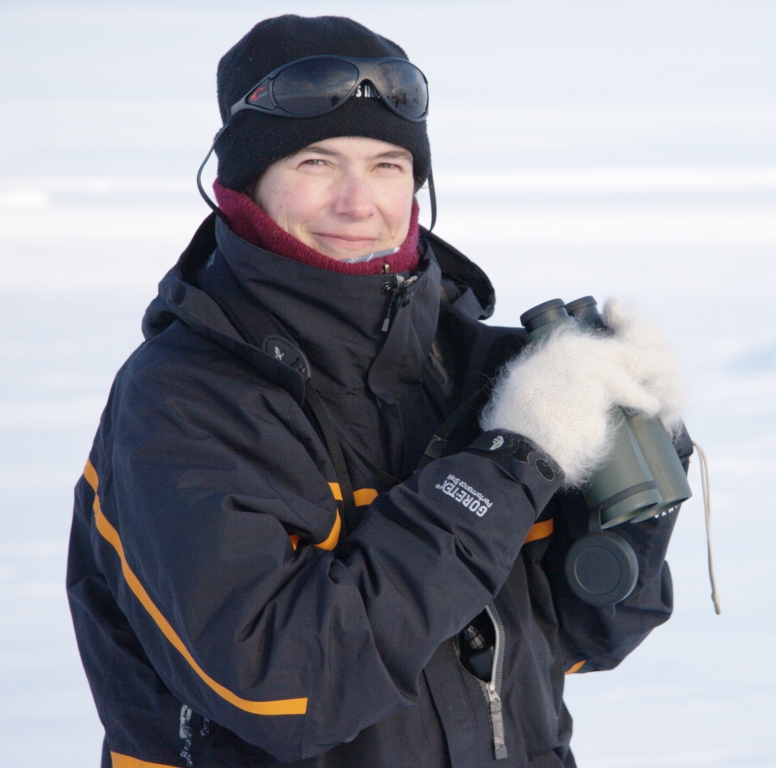
The "Eiderbook", as we dubbed this
truly fundamental work by Alexandra Goryashko is quite a rare
phenomenon in domestic literature. This is an excellent piece of work
in the genre of scientific and ecological education, even though the
author has not, probably, thought of it that way.
But the "Eiderbook", having hardly hatched, started living its own
life, imposing its will not only on the author but on all the
participants - the editors, scientists, the eider farming
practitioners, artists and designers, and just anyone, who
happened to be near, who, at some point of their
lives, crossed passes with the eider or eider experts.
The result was a monographic work not just about
the eider but about Man, the history of many countries and nations,
interwoven biographies, and the hard road of obtaining scientific
knowledge. This book is not merely
just interesting for all, including scientists. It is also very well
illustrated and beautifully designed. It is a synergy of enthusiasm
and dedication, of the love for the subject and demanding attitude
to one's own work.
Maria Gavrilo, PhD,
acting member of the Russian Geographic
Society.
Member of the British Royal Geographical Society. A polar
ornithologist with 35 years of experience.
Bought the Eiderbook. Now I'm
speechless. I cannot even imagine what it took to create it. Thank
you!
Gabi Schneider
Thank you for doing such a great
job of putting together and processing a huge amount of information and
publishing it as a book!
Andrei Voronkov
I'm delighted. Today I got the
BOOK, and now I, with great pleasure, am flipping over its pages
enjoying the text and illustrations. With gratitude for your work
and the best wishes,
Svetlana Patsayeva

There
is such a genre in scientific literature - a collective
monograph. Scientists of different specialties gather and
describe the same object, each from his own point of view, from
the standpoint of his own science. With a successful selection
of the team of authors, interesting books
result that give a three-dimensional
idea of the object described. In this
book, the same effect was achieved by
a single author.
If I had not been familiar with this book from the moment of the
birth of Alexandra's very idea, I would have decided that it was
written by many experts, competent but very
different: biologists, historians, religious and regional
studies experts, ethnographers and
material scientists, art and hunting experts, literary scholars
and local historians. And so that they do not fall into
scientific tedium, a journalist-publicist also worked with them.
But no, all this was done by one woman, an
eider-expert and a homeworker, who does not formally work
anywhere. I had no idea that it was
possible to process such a volume of
information alone and present it to the reader
the way it was presented.
The illustrations by Maria Sergunina and all the work of Gennady
Alexandrov on technical editing, and
especially preparing archive photos for the print, are
worthy of special admiration. Photos from a century ago
contribute to the book's charm.
Aleksandr Chernitskiy, Doctor of Biological Sciences, took part
in surveys of eiders and collecting down in the Kandalaksha
Nature Reserve in 1965 and 1966.

There are seven editors,
including myself, who have worked on the book. Recently I received
my copy. I need to admit that the book turned out much more serious
than I expected. This is probably so because I was mostly editing
the details of the biology of the bird I have a general knowledge
of. While I was
working on it, seemed
the book didn't have any surprising details on eider biology. Now,
however, turning its pages, I understand that it does have
information on eider biology, including meticulously collected data
on the structure of eider down,
but these are not easy to find in a volume of nearly 500 pages. A
large part of the book are life stories of people who studied the
eider,
worked on its protection, or organized the collection of down. These
are Icelanders, of whom we know nothing, our compatriots who
perished in the ruthless years of the 20th century, of whom we know
but very little, and eider experts whose lives turned out to be more
fortunate but even here the archive information and photos collected
by Alexandra provide new material. Finally, the book contains a lot
on the history of natural science, decorative and fine art and, of
course, stories related to this remarkable northern duck. Finally,
I'd like to mention its high print quality. The book has been put
together with love, making it equal to the best of collector's
books. I recommend it highly.
Pavel Kvartalnov,
PhD, Senior researcher at the Biology Faculty of the Moscow State
University
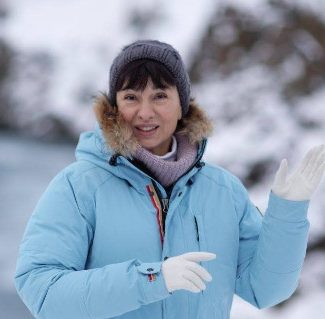
My friend wrote a book. Not one, but today we'll
talk of a jewel. In all probability you haven't heard of it. Unlike
the President of Iceland, who got this publication before I did.
Somehow he sniffed it out. They are always the first to know things.
If not friends then enemies. Still we,
ordinary mortals, can occasionally get insider information. Shortly,
let me present you the book. A very interesting one, especially
given that it is not at all a fantasy book,
and not even a crime story. But real truth of life. It is, however,
written in such a talented way that people all over Europe get into
it. And these people are not at all ornithologists. These are the
ones tired of empty belle lettres. Those who want something real.
Something truly interesting.
Svetlana Yefanova, tour guide,
Reykjavik, Iceland
|
 It
turned out, in my opinion, to bea totally unique book. The author's
ability to ask uncommon questions about usual things will prompt the
reader not to take established myths for granted only because they
were repeated many times over before. Thanks to exceptional
thoroughness with which the author handles archives and original
sources of information we can become acquainted with a great number
of little known or just forgotten books, documents, and facts. At
the same time the literary talent of the author allows a quite wide
range of readers to enjoy reading this fascinating, in a "crime
story" sort of way, book. It
turned out, in my opinion, to bea totally unique book. The author's
ability to ask uncommon questions about usual things will prompt the
reader not to take established myths for granted only because they
were repeated many times over before. Thanks to exceptional
thoroughness with which the author handles archives and original
sources of information we can become acquainted with a great number
of little known or just forgotten books, documents, and facts. At
the same time the literary talent of the author allows a quite wide
range of readers to enjoy reading this fascinating, in a "crime
story" sort of way, book.
Alexander Kondratyev,
PhD, deputy director of research
at the Institute of Biological Problems of the North of the Far East
Section of the Russian Academy of Sciences
One of the top experts on the
geese
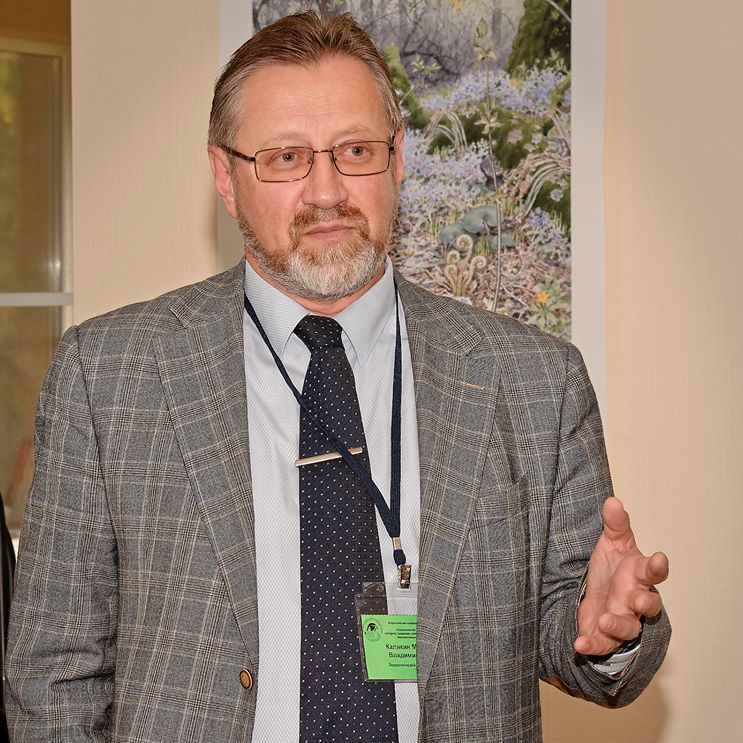 I've
known the author of this book and been aware of her work for 15 years,
and am certain that both the book and its author deserve trust and
support. All who helped in getting it published will be proud of having
participated in making this book printed. There was no book about birds
and people like this before! I've
known the author of this book and been aware of her work for 15 years,
and am certain that both the book and its author deserve trust and
support. All who helped in getting it published will be proud of having
participated in making this book printed. There was no book about birds
and people like this before!
Mikhail Kalyakin
Dr.Sc. (biology), director of the
Scientific Research Zoological Museum of the Moscow State University
I was the
first! I'll brag! I was the very first reader to grab this book!!!!
Brought it home but my mom took it away from me, saying she would be
the first one to read it, according to seniority. But when my mom
fell asleep I sneaked the book away from her! This is fascinating!
The text is beautifully written. The language is so easy it feels
not like reading but listening to a story.
Maria Danilova

My grandchildren grabbed the book and are reading
it at night. Occasionally I get a chance to take a peek into it...
Irina Pokrovskaya

What a masterpiece !!!!!! Thank you so much, we will
spend many many hours reading this and look at the pictures again
and again. Its a really great book and I am looking forward to have
it in the living room and read more and more in it.
Hanný and Tobbi
Sæból, Iceland
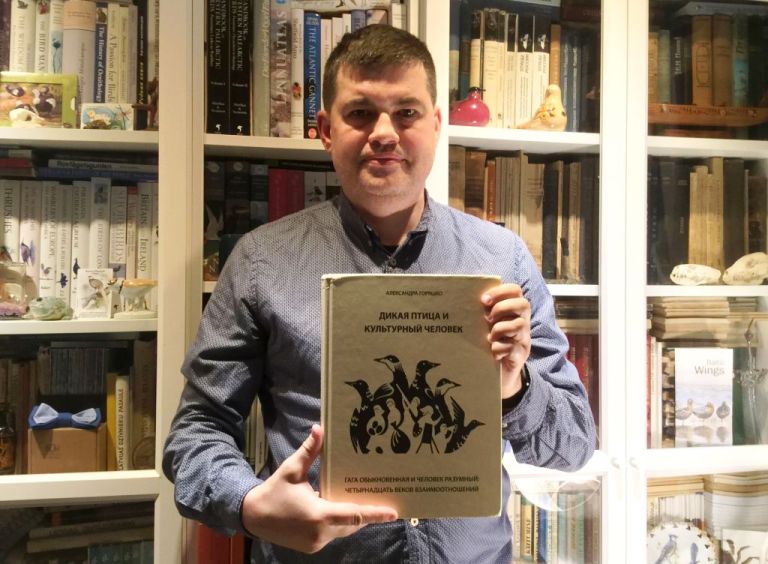
The Common eider can generally be seen by the sea
shore in Latvia only during its migration so this species is no part
of our "cultural history". In northern countries, however, the eider
is one of the most economically significant species of duck thanks
for a centuries-old tradition of harvesting eider down and eggs. In
the recent years I've been keeping an eye, via social networks, on
the difficulties related to gathering the material for the book and
finding the funds for its printing. The end result - a beautifully
looking, richly illustrated and inexpensive book - is, in my
opinion, quite a feat by the author and the whole team! The easy
language makes reading about historic and present-day events related
to the eiders and people a pleasure! In fact, this book is an
excellent example of modern popular science book about birds that I
keep in my bookcase close to classic monographies by the English
writer Errol Fuller and several richly illustrated publications on
the history of Australian, German and Maltese ornithology. In my
opinion these are good examples to follow for the writers of popular
science books on ornithology.
Ruslan Matrozis
Latvian Ornithological Society
An absolutely fantastic book! An
awesome piece of work! Totally outstanding! Continue
reading..
E.N. Panov, Ph.D., member of the
Russian Academy of Sciences
I am proud to have made a contribution, be it small,
to such a marvelous book.
Austin Reed, Canada
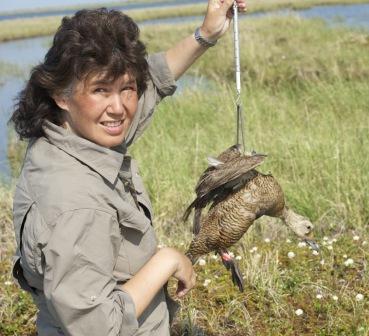
The words "cultured man" in the name of the book
are perceived as an irony but only until you've read at least half
of the book. In reality, one of the main themes of the book is the
story about a rare but carefully preserved culture of eider down
harvesters. The history of Icelandic and Norwegian families, old
photos and faces of modern people busy with such an unusual but
common and traditional for them business as cultivating eider
colonies and picking the soft harvest. This is probably the most
humane type of agriculture in the world as even the merino sheep are
slaughtered at the end. Here, however, Man and the eider enrich each
other without causing any mutual harm.
Life on small islands is idyllic, and it is too bad that such
lifestyle is accessible to only a small number. And the most sincere
gratitude to Alexandra for a loving and detailed story about this
peaceful life of people and birds.
Diana Solovyeva, Ph.D., a senior researcher of the
Institute of Biological Problems of the North of the Russian Academy
of Sciences, an expert on Stellar eider.
The author of one of the chapters in The Common
Eider by Waltho C. and Coulson J.,
2015.
Popovkina A.B. Review of 'A Wild Bird and a Cultured Man. The Common
Eider and Homo Sapiens: Fourteen Centuries Together' //
Environmental History, Duke University Press (United States), v 27,
¹ 3, p. 564-566.
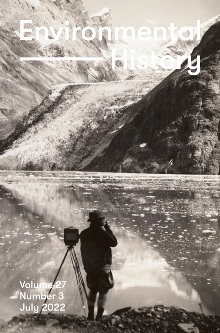 PDF 40,5
êá
PDF 40,5
êá
|
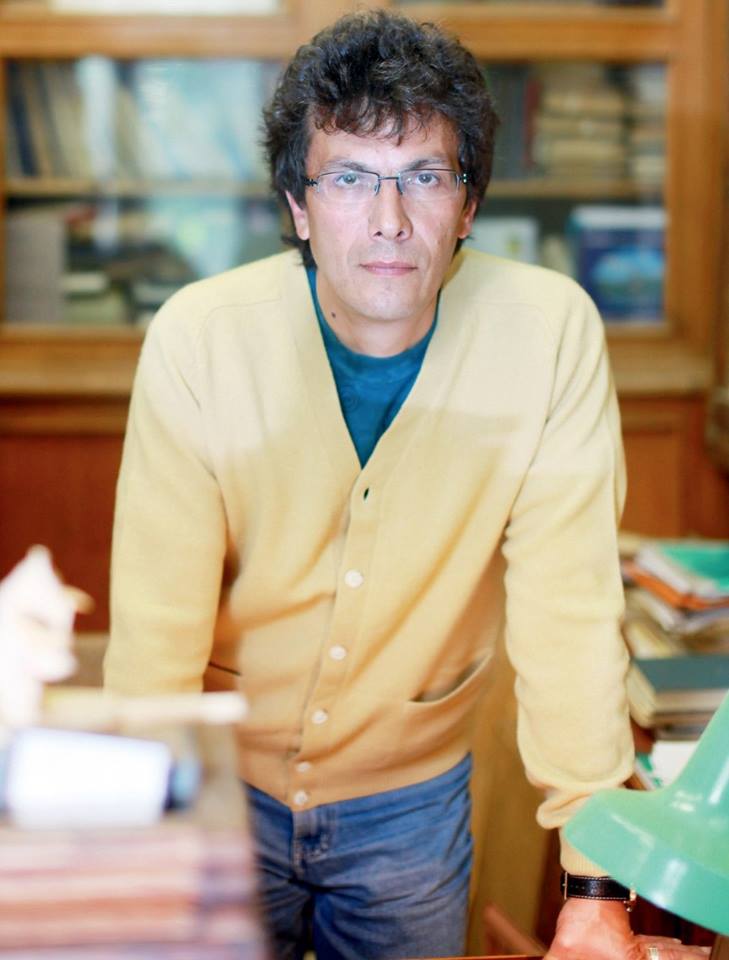
I think it is a deserving book, written very
professionally and yet not at all boring. From this seemingly narrow
subject of just one species of bird grew an impressive and
captivating saga about nature, culture, and history of several
countries. It encourages one to not only
take a fresh look at the eider biology but on many issues of
history, ethnography and even the methods of science. Lastly, this
is just a very interesting and thorough piece of literature of the
popular science genre.
Alexander
Markov,
Dr.Sc. (biology), professor of
Russian Academy of Sciences.
Head of the Biological Evolution Faculty of the
Moscow State University's Biology Department, senior researcher of
the Palaeontology Institute of the Russian Academy of Sciences.
Chairperson of the board of directors of the "Evolution" fund.
It happened! Today I managed to
acquire a freshly printed, still warm, and certain to become
legendary, copy of the Eiderbook "A Wild Bird and a Cultured Man.
The Common Eider and Homo Sapiens: Fourteen Centuries Together" (St.
Petersburg 2020). The most delicious 496
pages about the eider biology, its down, and the relations with
people, from the time of the Vikings to nowadays. Coated paper,
luxurious photographs of present and former times, striking
miniatures... My congratulations to the author!
Georgy Vinogradov

I feel very
proud to have helped Sasha and her husband Pasha with making the
English version sound as natural as possible instead of being a
purely academic book. While doing such a pleasurable task I learnt a
lot of fascinating things about the marvellous Eider ducks
relationship with Man in Russia and Scandinavian countries. It's
been a labour of love for Sasha to put down in writing and share her
immense ornathological knowledge with readers in such a way that
it's a book that anyone would find interesting and informative and
good enough to grace bookshelves or table tops anywhere. The
illustrations and photographs add to the story. Buy the book for
yourself to while away hours, as a gift for a friend or bird
protection project in Russia or abroad. For certain they'll be
thrilled when the wrapping's ripped off!
David-Leslie Urion
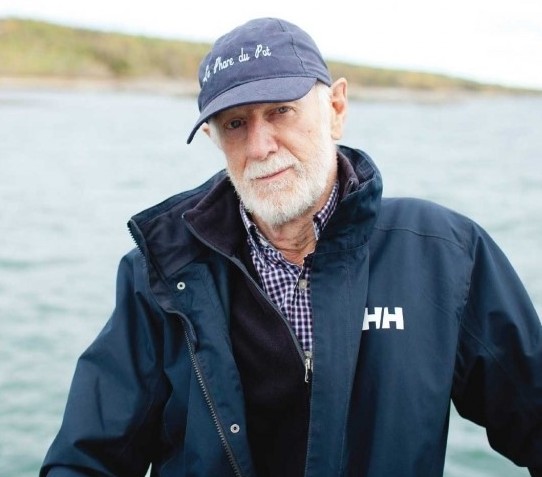
Your (dedicated) book finally arrived. What a mine of
information! What a monumental work to collect and synthetize all
this knowledge most of which is totally unknown to North American
biologists.
Jean Bédard
Société Duvetnor,
Canada
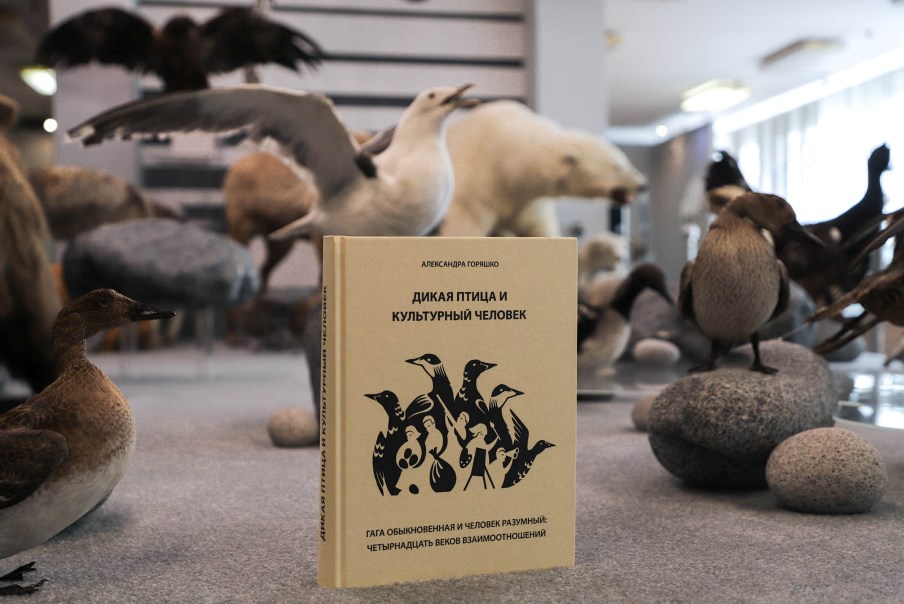
Magadan Regional Museum of Local History
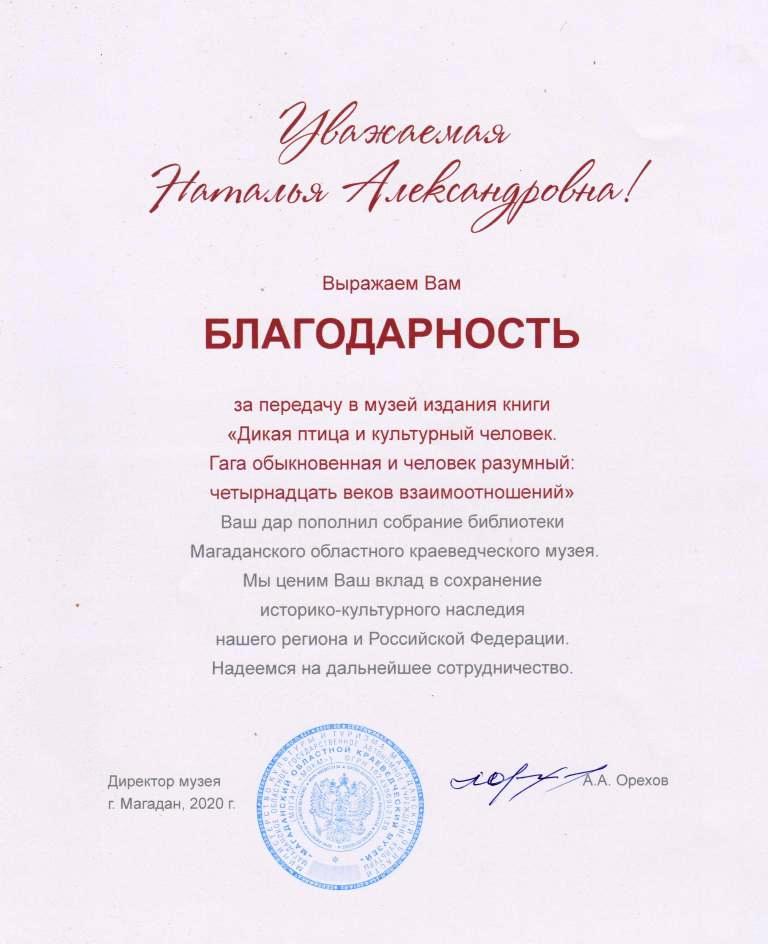
Dear Alexandra,
We would like to express our gratitude for a copy of your book "A
Wild Bird and a Cultured Man - Fourteen Centuries Together".
Your present was added to the library of the Magadan Regional Local
History Museum. We appreciate your input into the preservation of
cultural and historic inheritance of our region and of the Russian
Federation. We hope to continue our collaboration.
Museum director A.A. Orekhov

I was profoundly touched by the
scope of your titanic labour. I am in loss for words to express my
delight. But my wife found the right ones: "The Nobel Prize would
not be enough!" I congratulate you on this remarkable success! I am
not aware of any publications of equal value on any subject.
A.D. Naumov,
Dr.Sc. (biology), the Russian Academy of Sciences Zoological
Institute
Jevgeni Shergalin. Review of 'A Wild Bird and a Cultured Man. The
Common Eider and Homo Sapiens: Fourteen Centuries Together' //
"British Birds". April 2021 – vol. 114, issue 4, pp 243–244
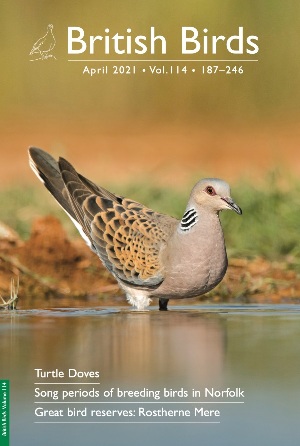
Congratulations! What an
extraordinary book! We are absolutely thrilled to have this gem in
our collection - to be shared with our friends. Thank you for our
treasure.
My husband Dan is a sculptor,
mainly of birds. This eider has a four foot wing span - I gave Dan
this buoy (body) and then your book arrived and there has been no
peace - he has been so inspired by your work and now he is
completing this wonderful bird. This project was a long time in the
background and now takes over most of his waking hours...

The eider finally made it to
our living room! Mighty impressive duck! And it’s all thanks to you.
Our danish friend Niels Roos
read your book cover to cover immediately but we are savoring it
slowly, learning more and more each time.
Dan & Kyra West,
USA
|